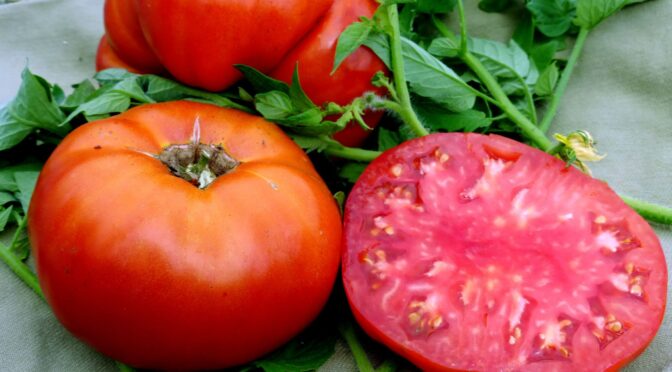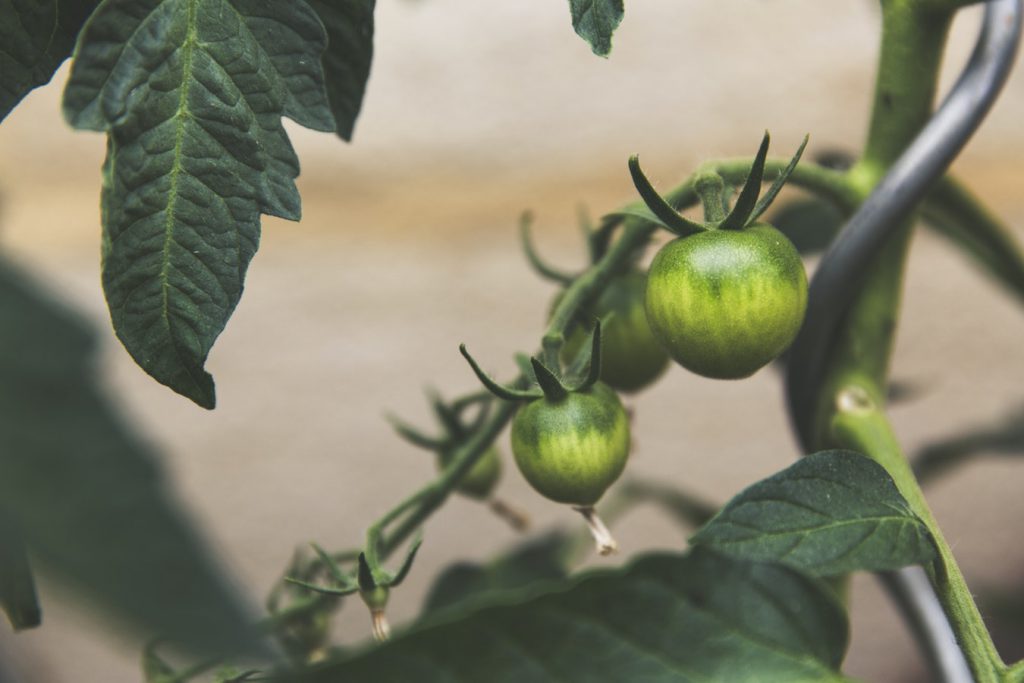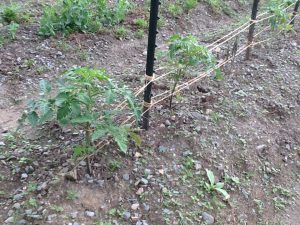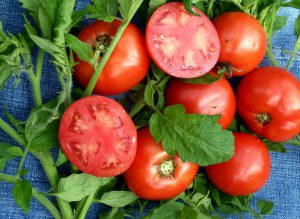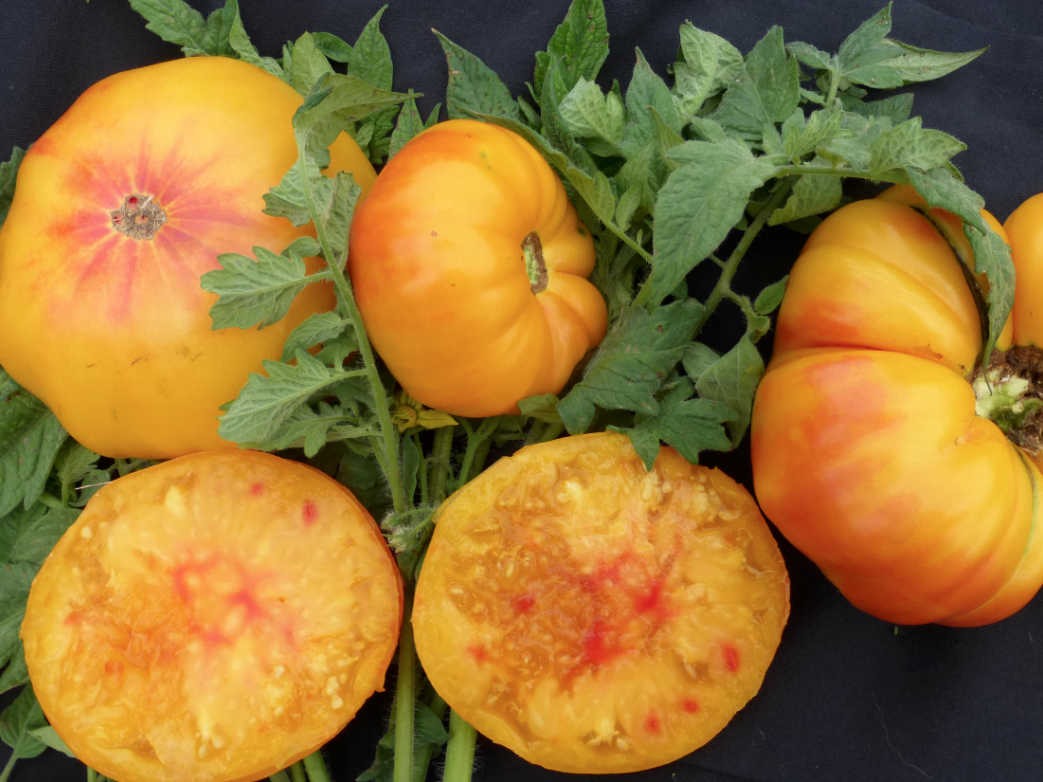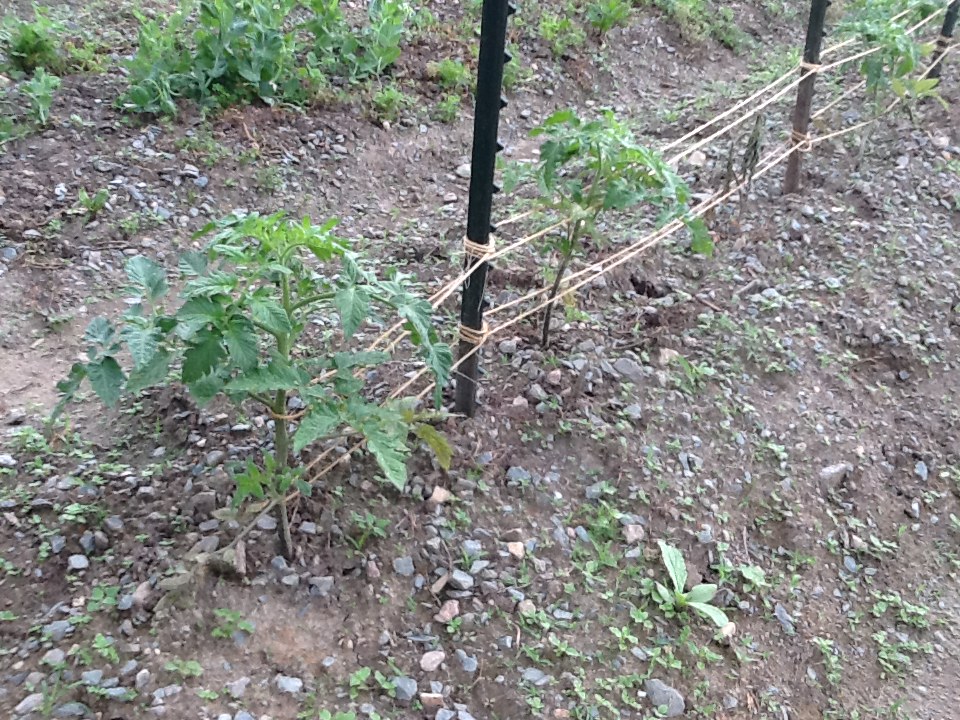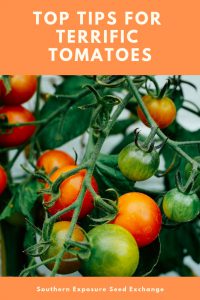Tomatoes are the stars of the veggie patch. They’re a favorite among new gardeners and experienced green thumbs alike. As with any crop, the more you know about tomatoes, the better production you’ll be able to get. Learn what types of tomatoes to grow to suit your specific garden and needs.
We can divide tomatoes into two basic categories, indeterminate and determinate.
Indeterminate Vs. Determinate
Indeterminate tomatoes have a more vine-like growth habit and will grow 8 to 10 feet tall. They’re heavy producers that fruit throughout the season, often until frost kills them.
Determinate tomatoes typically have a bushier, more compact structure and grow about 5 feet tall. They fruit and ripen all at once. Due to this feature, grows often select these tomatoes for storage or canning.
Types of Tomatoes
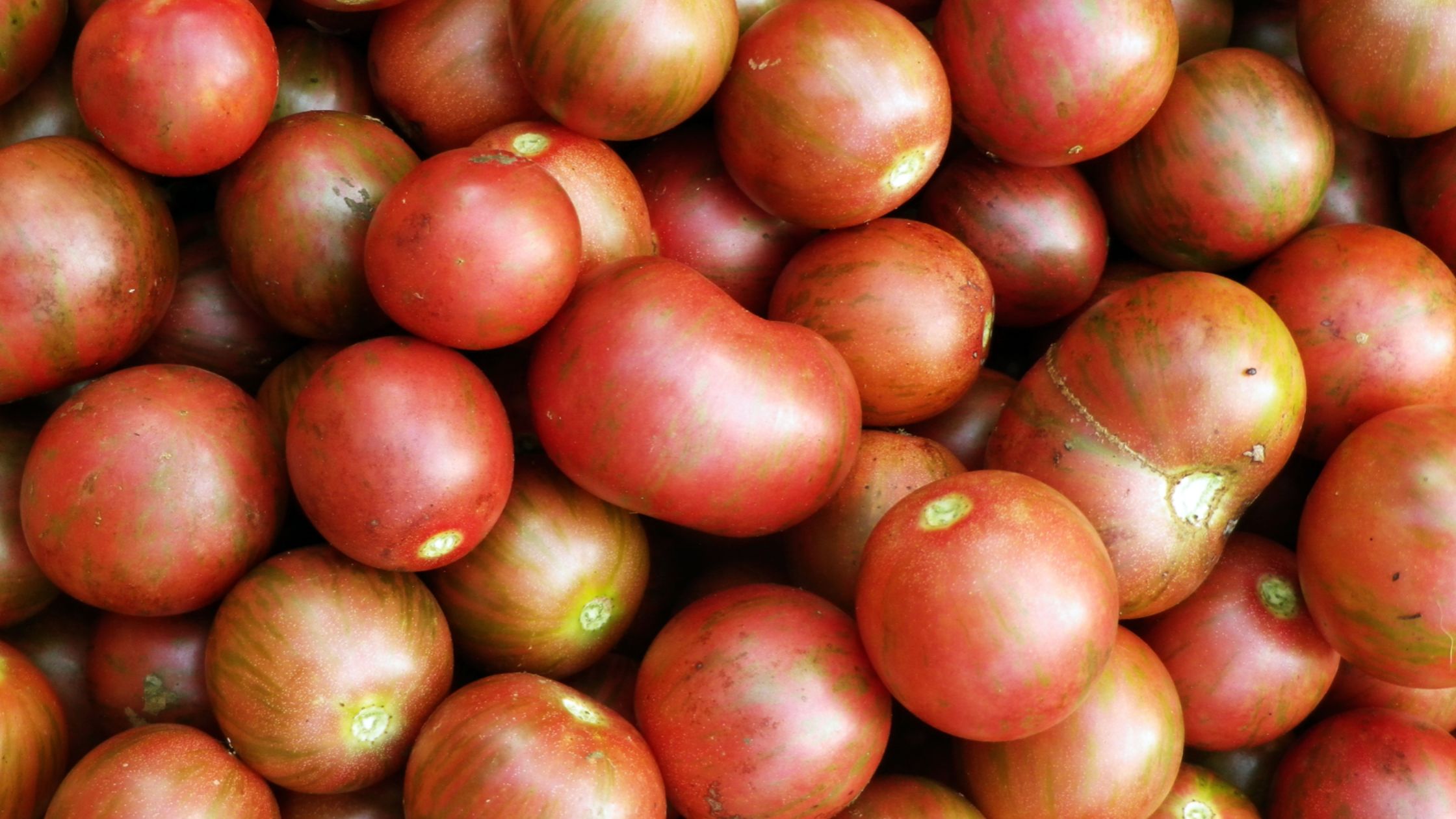 Cherry/Currant/Grape Tomatoes
Cherry/Currant/Grape Tomatoes
They’re great for kids (and adults) to snack on, and they’re prolific producers. These tomatoes also tend to tolerate being grown in containers well, making them an excellent choice for renters.
Currant tomatoes are the smallest and very close to wild tomatoes. They often self-seed and have good disease resistance and intense, sweet flavor.
Our favorites include Matt’s Wild Cherry, Purple Bumble Bee, Coyote, and Principe Borghese, a little Italian heirloom bred for sun-drying.
Paste & Processing Tomatoes
These tomatoes tend to have denser, drier flesh than slicers. This makes them well-suited to sauces, drying, and canning, but they are still quite tasty eaten fresh! They also tend to be very disease-resistant and hardy.
If you’re looking for an excellent tomato for processing, try varieties like Bisignano #2, Illini Gold, and the classic Amish Paste.
Slicing Tomatoes
These tomatoes range from small 6-ounce fruits to giant beefsteaks. They’re thin-skinned, juicy, and flavorful, perfect for summertime sandwiches!
Some of our favorite slicers are Radiator Charlie’s Mortgage Lifter (our flagship tomato), Kellogg’s Breakfast, Illini Star, Green Zebra, and Japanese Black Trifele Tomato.
Storage Tomatoes
Storage tomatoes are typically planted 1 to 2 months after your regular season tomatoes for fall ripening. Fruits are harvested while still green and ripen slowly off the vine allowing you to have fresh tomatoes long after your garden is finished for the season.
If you’d like to try storage tomatoes, check out Garden Peach or Reverend Morrows Long Keeper.
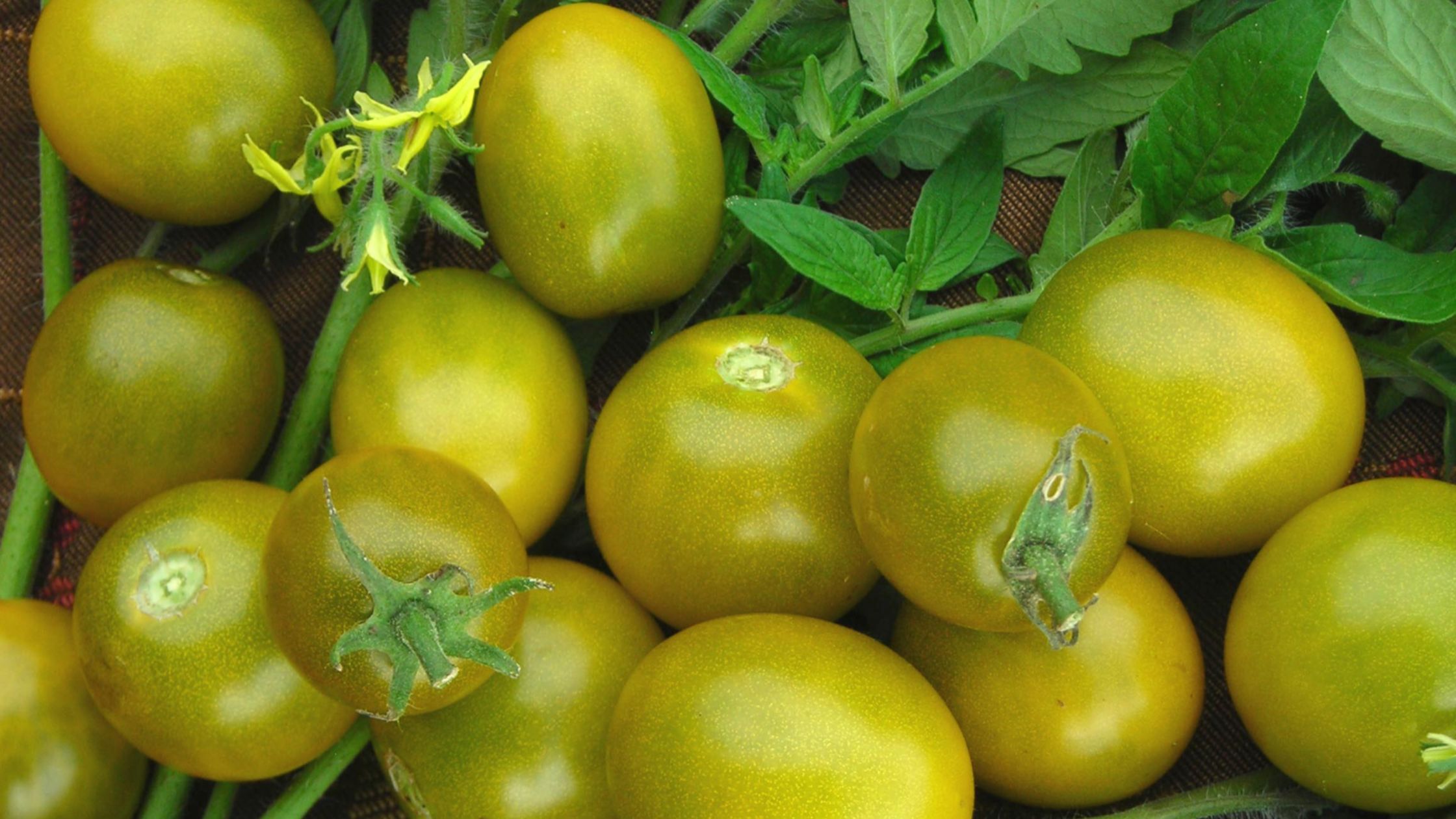 Colors of Tomatoes
Colors of Tomatoes
I also wanted to note that if you’re accustomed to grocery store tomatoes, you may assume that most of them are red. However, tomatoes come in a wide range of colors. We carry bicolor, green, red, pink, yellow, orange, white, and purple/black tomatoes at SESE. Some may produce multiple colors, like Amy’s Apricot Mix Cherry Tomato.
Disease Resistance
In the types of tomatoes above, I briefly touched on the fact that cherry and paste tomatoes are often some of the most disease-resistant varieties. However, there are varieties that feature different disease resistance that fall under all types of tomatoes.
When you look at tomatoes in the catalog or website, you may notice letters after their name. These letters indicate resistance to specific diseases. This doesn’t mean that these tomatoes are immune, only that they will tolerate this disease pressure better than other varieties.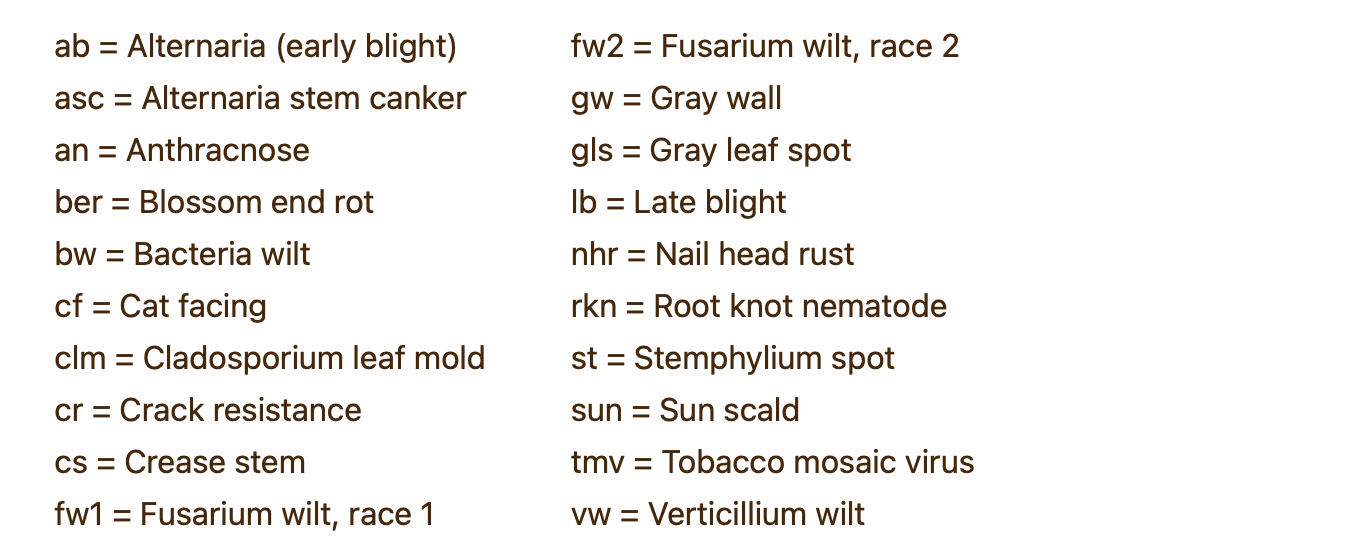
Note that many heirloom tomatoes have not been extensively tested for disease tolerance either in the laboratory, or in extensive field trials – absence of disease resistance information in the variety description does not imply lack of resistance.
If you’re new to gardening, selecting varieties for your garden can be challenging when there are so many. This basic overview of tomatoes is a great place to start your tomato journey!

